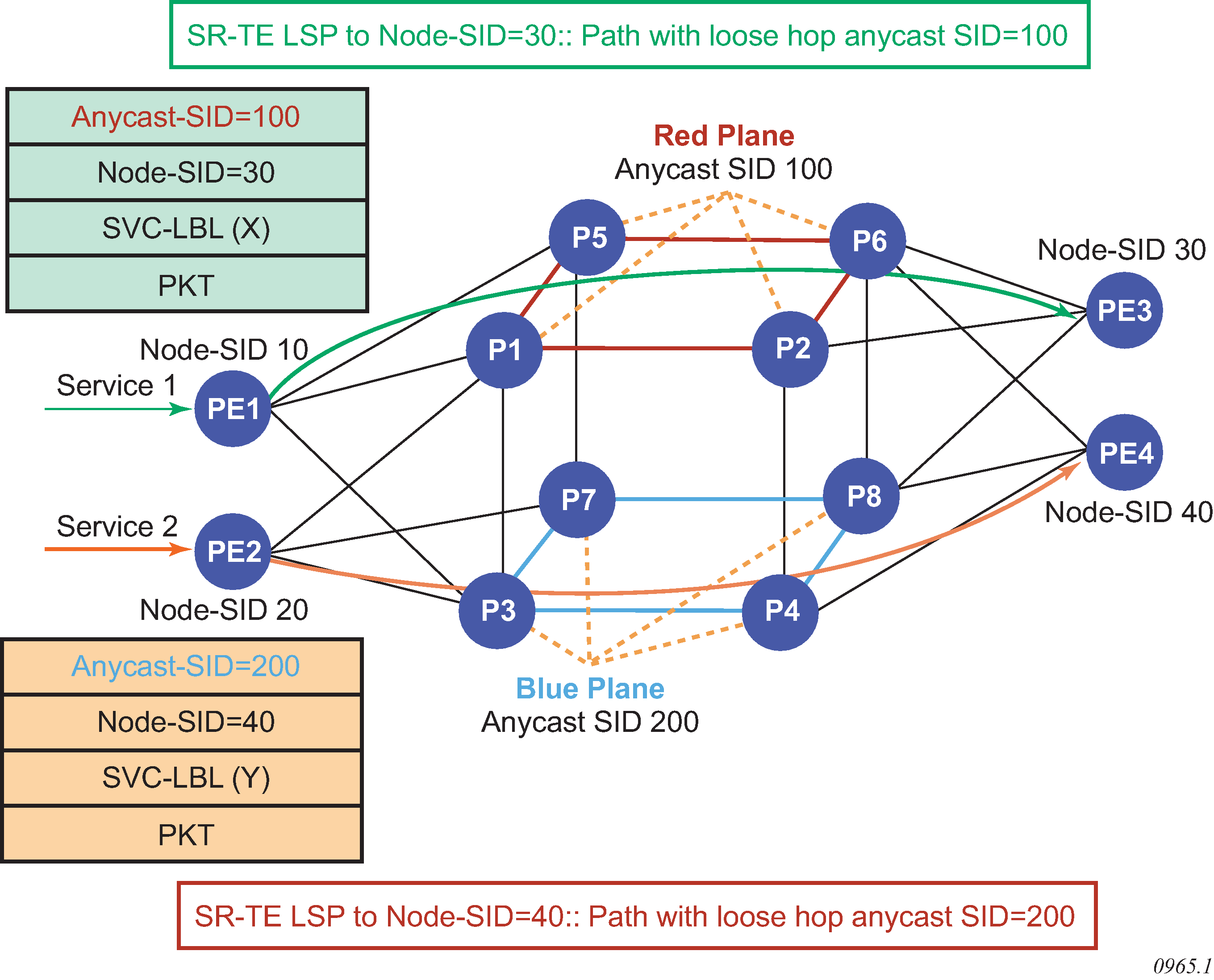The router supports both a full CSPF and a basic hop-to-label translation path computation methods for a SR-TE LSP. In addition, the user can configure a path for the SR-TE LSP by explicitly entering SID label values.
The ingress LER has a few ways to detect a path is down or is not optimal and take immediate action:
Failure of the top SID detected via a local failure or an IGP network event. In this case, the LSP path goes down and MPLS will retry it.
Timeout of the seamless BFD session when enabled on the LSP and the failure-action is set to the value of failover-or-down. In this case, the path goes down and MPLS will retry it.
Receipt of an IGP link event in the TE database. In this case, MPLS performs an ad-hoc re-optimization of the paths of all SR-TE LSPs if the user enabled the MPLS level command sr-te-resignal resignal-on-igp-event. This capability only works when the path computation method is the local CSPF. It allows the ingress LER not only to detect a single remote failure event which causes packets to drop but also a network event which causes a node SID to reroute and thus forwarding packets on a potentially sub-optimal TE path.
Performing a manual or timer based resignal of the SR-TE LSP. This applies only when the path computation method is the local CSPF. In this case, MPLS re-optimizes the paths of all SR-TE LSPs.
With both the hop-to-label path computation method and the user configured SID labels, the ingress LER does not monitor network events which affect the reachability of the adjacency SID or node SID used in the label stack of the LSP, except for the top SID. As a result, the label stack may not be updated to reflect changes in the path except when seamless BFD is used to detect failure of the path. It is therefore recommended to use this type of SR-TE LSP in the following configurations only:
empty path
path with a single node-SID loose-hop
path of an LSP to a directly-connected router (single-hop LSP) with an adjacency-SID or a node-SID loose/strict hop
strict path with hops consisting of adjacencies explicitly configured in the path as IP addresses or SID labels.
The user can also configure a SR-TE LSP with a single loose-hop using the anycast SID concept to provide LSR node protection within a given plane of the network TE topology. This is illustrated in Figure 1. The user configures all LSRs in a given plane with the same loopback interface address, which must be different from that of the system interface and the router-id of the router, and assigns them the same node-SID index value. All routers must use the same SRGB.

Then user configures in a LER a SR-TE LSP to some destination and adds to its path either a loose-hop matching the anycast loopback address or the explicit label value of the anycast SID. The SR-TE LSP to any destination will hop over the closest of the LSRs owning the anycast SID because the resolution of the node-SID for that anycast loopback address uses the closest router. When that router fails, the resolution is updated to the next closest router owning the anycast SID without changing the label stack of the SR-TE LSP.